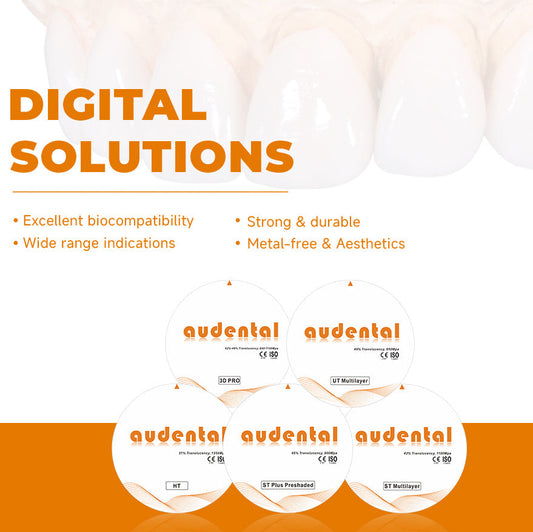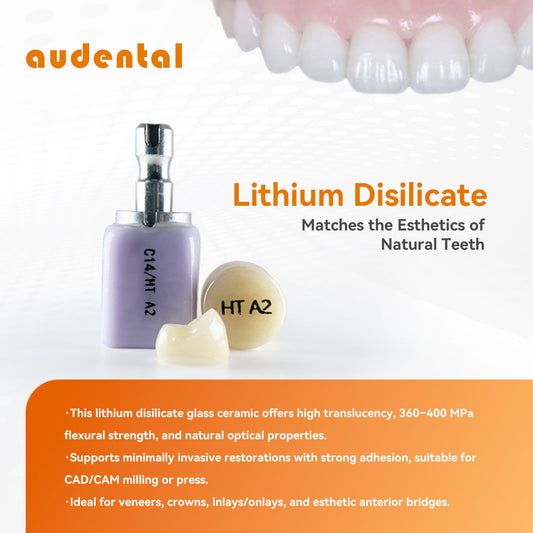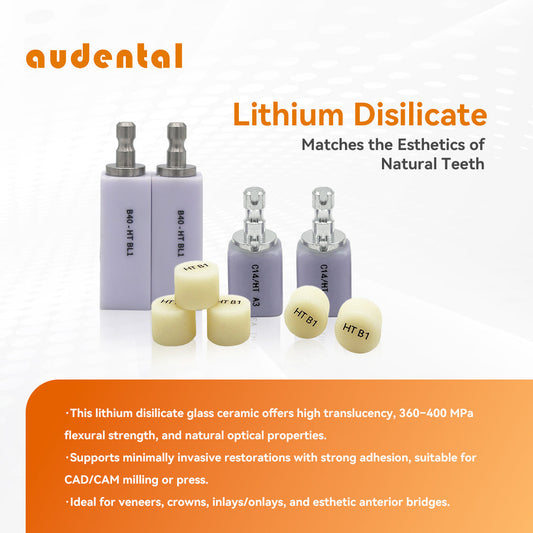The Impact of Sintering Process on Zirconia Block Performance
Share
Zirconia blocks are widely used in dental restorations, particularly in the fabrication of crowns, bridges, and other restorations through CAD/CAM technology, thanks to their high strength and biocompatibility. However, the performance of zirconia blocks is not only influenced by their crystal structure and raw material selection; the sintering process plays a critical role in determining their final properties. The various parameters of the sintering process directly affect the strength, density, translucency, and overall performance of zirconia blocks.
1. The Impact of Sintering Temperature on Zirconia Performance
Sintering temperature is a key factor in the zirconia sintering process, directly affecting the material’s density, grain size, and phase transformation. In general, higher sintering temperatures help increase the density of zirconia blocks, reducing porosity and enhancing strength. However, excessively high sintering temperatures may cause excessive grain growth, leading to increased brittleness and affecting the material's long-term durability.
To avoid this issue, zirconia blocks are typically sintered within a temperature range of 1200°C to 1600°C. This range ensures that the material achieves optimal physical properties, balancing density, strength, and toughness.

3d Pro Sintering Curve
2. The Role of Sintering Time
In addition to sintering temperature, the sintering time is another critical factor affecting the performance of zirconia. If the sintering time is too short, the material may not be fully sintered, leaving microvoids or pores inside the zirconia, which significantly reduces its strength and density. On the other hand, sintering for too long can lead to excessive grain growth, reducing the mechanical properties and toughness of the material.
Thus, sintering time must be carefully controlled to achieve the best density while avoiding grain coarsening. Different manufacturers may offer different sintering curves depending on the material's characteristics to achieve the desired sintering outcome.



|
|
ST White Sintering Curve |
|
|
Bridge Restoration(less than 6 units) |
Bridge Restoration(more than 6 units) |
Half long bridge Restoration
|
3. The Influence of Sintering Atmosphere
The sintering atmosphere also plays a significant role in the performance of zirconia. During the sintering process, zirconia may react with oxygen, particularly at high temperatures, and form a layer of yttria on the surface. This yttria layer can impact the material’s strength and toughness. To prevent this, modern zirconia blocks are typically sintered in controlled atmospheres using nitrogen or vacuum, stabilizing the yttria composition to ensure the material's strength and long-term stability.
4. The Impact of Optimizing Sintering Process on Aesthetic Performance
In addition to mechanical properties, the translucency of zirconia is another important factor, especially in anterior restorations where aesthetics are crucial. The sintering temperature and time directly affect the crystal structure and surface smoothness of zirconia, which in turn influences its optical properties. By optimizing the sintering process, manufacturers can improve translucency while maintaining strength, making the restorations more aesthetically pleasing and closer to the appearance of natural teeth.



5. Conclusion
The sintering process plays a vital role in determining the final performance of zirconia blocks. Appropriate control of sintering temperature, time, and atmosphere can effectively enhance the density, strength, translucency, and toughness of zirconia, ensuring high-quality materials for dental restorations. To guarantee the optimal performance of zirconia blocks, manufacturers must precisely control the sintering parameters based on specific application needs and material characteristics, achieving a perfect balance between mechanical strength and aesthetic appearance.




